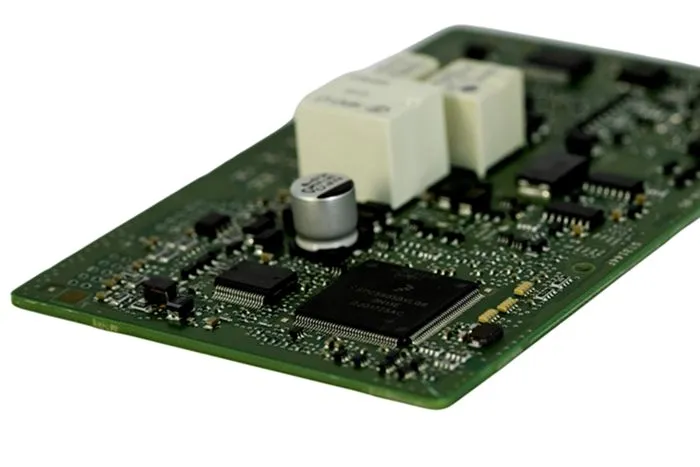How to Enhance PCBA Shelf Life?
Enhancing the shelf life of Printed Circuit Board Assemblies (PCBAs) is crucial in PCBA manufacturing to ensure long-term reliability and performance. To achieve this, implement proper moisture control measures, use high-quality components, apply conformal coatings, optimize storage conditions, and conduct regular inspections. These strategies help protect PCBAs from environmental factors like humidity, oxidation, and temperature fluctuations, significantly extending their lifespan and maintaining functionality over time. By incorporating these practices into your PCBA manufacturing process, you can ensure that your assemblies remain in optimal condition for extended periods, reducing the risk of failures and improving overall product quality.

Understanding Factors Affecting PCBA Shelf Life
Environmental Influences on PCBA Longevity
The shelf life of PCBAs is significantly impacted by various environmental factors. Humidity stands out as a primary concern in PCBA manufacturing, as excessive moisture can lead to oxidation and corrosion of components and traces. Temperature fluctuations also play a crucial role, potentially causing thermal stress and solder joint fatigue. Additionally, exposure to dust, pollutants, and electromagnetic interference can degrade PCBA performance over time.
Component Quality and Its Impact on Durability
The quality of components used in PCBA manufacturing directly influences the assembly's shelf life. High-grade components typically offer better resistance to environmental stressors and exhibit longer operational lifespans. Conversely, subpar or counterfeit components may deteriorate rapidly, compromising the entire PCBA's reliability. Sourcing components from reputable suppliers and implementing rigorous quality control measures are essential steps in enhancing PCBA longevity.
The Role of PCB Design in Shelf Life Extension
Thoughtful PCB design is instrumental in extending PCBA shelf life. Proper component placement, adequate spacing, and efficient thermal management can significantly reduce stress on the assembly. Implementing design features like conformal coating areas and moisture-resistant layouts can further enhance durability. Designers should also consider the end-use environment of the PCBA, tailoring the design to withstand specific challenges such as high humidity or extreme temperatures.
Best Practices for Extending PCBA Shelf Life
Implementing Effective Moisture Control Strategies
Moisture control is paramount in PCBA manufacturing to enhance shelf life. Utilizing dry storage techniques, such as desiccant cabinets or nitrogen-purged environments, helps maintain optimal humidity levels. Implementing moisture-sensitive device (MSD) handling procedures, as outlined in IPC standards, is crucial. This includes proper baking processes to remove absorbed moisture before assembly and using moisture barrier bags for storage and transportation.
Applying Protective Coatings and Finishes
Protective coatings play a vital role in PCBA longevity. Conformal coatings, such as acrylic, silicone, or urethane, create a barrier against moisture, dust, and chemical contaminants. These coatings not only extend shelf life but also enhance the PCBA's operational lifespan. Additionally, selecting appropriate PCB surface finishes like ENIG (Electroless Nickel Immersion Gold) or HASL (Hot Air Solder Leveling) can provide added protection against oxidation and improve solderability over time.
Optimizing Storage and Handling Procedures
Proper storage and handling are critical aspects of PCBA shelf life enhancement. Implementing electrostatic discharge (ESD) protection measures throughout the manufacturing and storage process prevents damage to sensitive components. Maintaining a controlled environment with stable temperature and humidity levels is essential. Utilizing specialized packaging materials, such as anti-static bags and moisture-barrier packaging, further protects PCBAs during storage and transportation. Regular inventory rotation and implementing first-in-first-out (FIFO) practices ensure that older assemblies are used before newer ones, minimizing the risk of shelf life expiration.
Advanced Techniques in PCBA Preservation
Leveraging IoT for Environmental Monitoring
In modern PCBA manufacturing, Internet of Things (IoT) technology offers advanced solutions for preserving PCBA shelf life. IoT-enabled sensors can continuously monitor storage conditions, including temperature, humidity, and air quality. This real-time data allows for immediate corrective actions if environmental parameters deviate from optimal levels. Implementing such smart monitoring systems not only enhances quality control but also provides valuable data for continuous improvement of storage practices.
Implementing Predictive Maintenance for Stored PCBAs
Predictive maintenance techniques can be applied to stored PCBAs to proactively address potential issues before they impact shelf life. By analyzing historical data and environmental conditions, manufacturers can predict when PCBAs might require re-baking, re-testing, or other preservation measures. This approach minimizes the risk of degradation during storage and ensures that PCBAs maintain their quality until they are ready for use or shipment.
Utilizing Advanced Materials for Enhanced Durability
The field of materials science continually evolves, offering new opportunities for enhancing PCBA shelf life. Incorporating advanced PCB materials with improved moisture resistance and thermal stability can significantly extend the durability of assemblies. Similarly, using next-generation solder materials and flux formulations can improve joint reliability and resistance to environmental stressors. Staying abreast of these material advancements and integrating them into PCBA manufacturing processes can lead to substantial improvements in shelf life and overall product longevity.
Conclusion
Enhancing PCBA shelf life is a multifaceted challenge that requires a comprehensive approach in PCBA manufacturing. By understanding the factors affecting longevity, implementing best practices, and leveraging advanced techniques, manufacturers can significantly extend the viability and reliability of their PCBAs. From moisture control and protective coatings to IoT-enabled monitoring and predictive maintenance, each strategy plays a crucial role in preserving PCBA quality.
As technology continues to advance, staying informed about the latest developments in materials and preservation techniques will be key to maintaining a competitive edge in PCBA manufacturing and ensuring the production of high-quality, long-lasting electronic assemblies.
Moisture control & RoHS-compliant storage for longevity | Ring PCB
Ring PCB Technology Co., Limited, your trusted PCB Manufacturing Partner since 2008, offers comprehensive one-stop PCB and PCBA services. Our advanced engineering ensures precision manufacturing with high-density stack-ups and smart manufacturing processes. We specialize in delivering innovative, reliable, and cost-effective solutions for various industries, including electronics, automotive, aerospace, and medical.
With our expertise in moisture control and RoHS-compliant storage, we guarantee optimal longevity for your PCBAs. Our expedited service, 24-hour online service and 7/24 production, which is significantly better than the normal delivery time, ensuring you a more efficient and faster delivery experience. For more information, contact us at [email protected].
References
1. IPC-1601A: Printed Board Handling and Storage Guidelines (2016)
2. J. Lau, "Solder Joint Reliability: Theory and Applications" (2020)
3. R. Tummala, "Fundamentals of Microsystems Packaging" (2019)
4. S. Ganesan and M. Pecht, "Lead-free Electronics" (2018)
5. IPC-J-STD-033C: Handling, Packing, Shipping and Use of Moisture/Reflow Sensitive Surface Mount Devices (2017)

Welcome to Ring PCB! Share your inquiry, and receive a tailored quotation!

Ring PCB, your trusted partner for PCB & PCBA Full Turnkey Solutions



